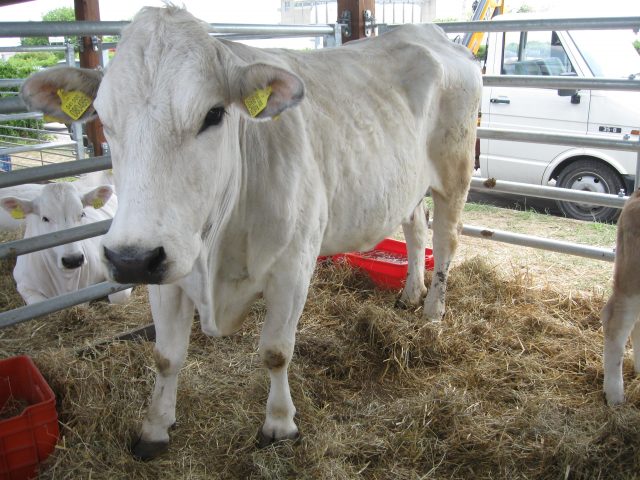Type the name of the breed you're looking for below
[wpdreams_ajaxsearchlite] Don't see the breed your're looking for? Click here and let us know!
Marchigiana cattle
| Place of Origin | Italy |
| Origin | The Marchigiana breed originated in the Marche and surrounding provinces of Italy near Rome. This area is typified by rough terrain and the available feed is often less than ideal. The breed now makes up about 45% of Italy's total cattle population. There seems to be considerable differences in opinion as to the exact origin of the breed. According to The Meaty Marchigiana, a leaflet published by the American International Marchigiana Society, they were brought into the area by the Barbarians after the fall of Rome in the fifth century. Anther version, put forth by Dr. Briggs in Modern Breeds of Livestock, is that it is a relatively new breed, being differentiated as late as 1933 and known locally at the time as the Improved Marche. According to this version, the indigenous stock of the area had been intermixed with the Chianina and two other varieties of mountain cattle. Selection then followed for the large type of cattle which were desired on the lower and more fertile slopes of the region where forage was more abundant. |
| Purpose | Beef |
| Appearance | The breed resembles the Chianina in color and general conformation. They are large and quite muscular but have relatively refined bone structure. They are a short-haired breed that varies in color from light gray to almost white. The skin is pigmented and the tongue, muzzle, and external opening are black. The tail switch is dark and they are usually dark around the eyes. |
| Horns | The medium-sized horns are black at the tip, white in the middle, and have a yellowish cast at the base and usually curve forward in bulls and upward in females. Due to the introduction of the poll gene from foundation females used in grading up, percentage cattle are often selected for the polled trait in the United States. |
| Other Considerations | They occasionally exhibit double muscling. |



